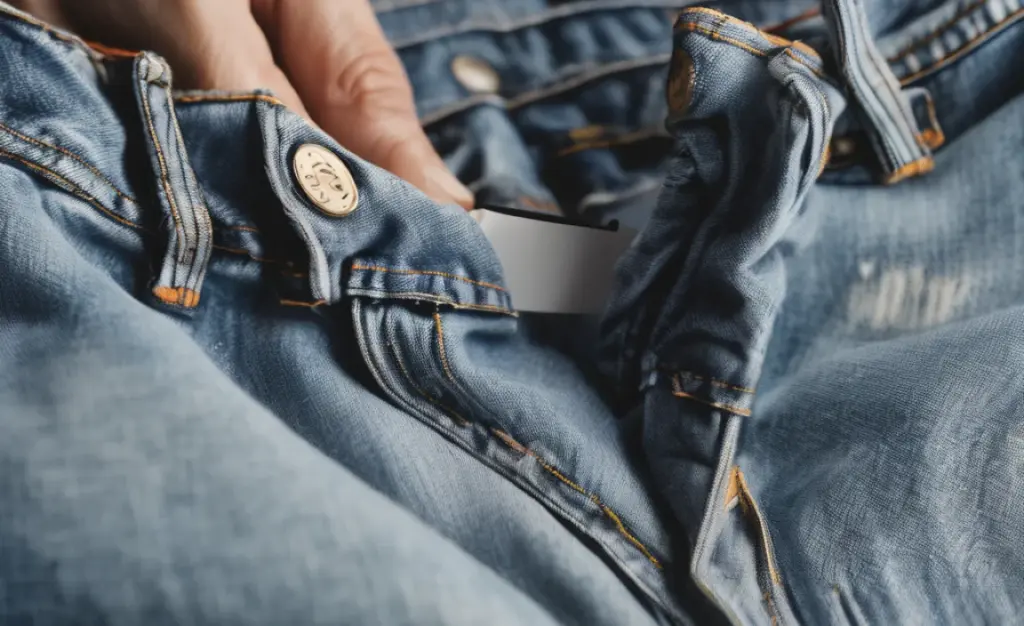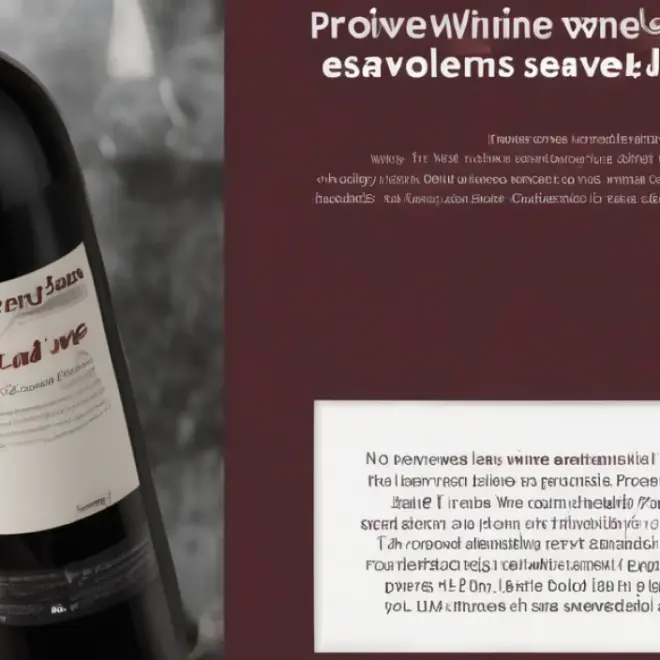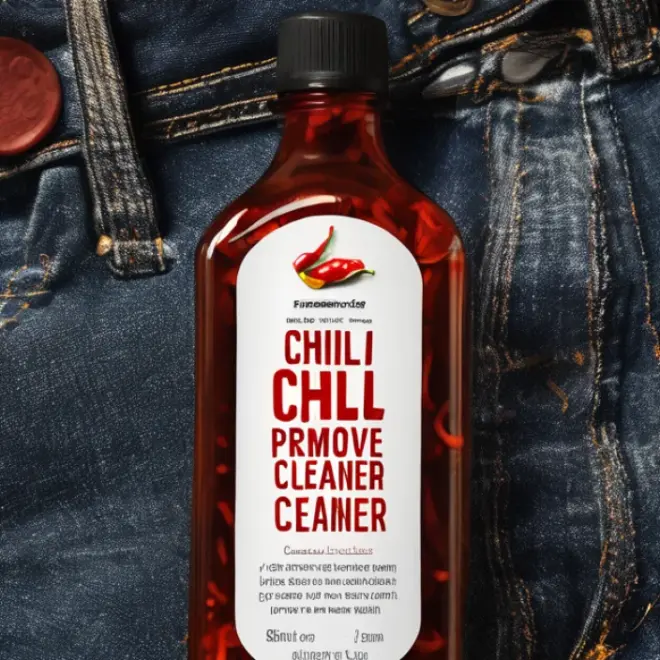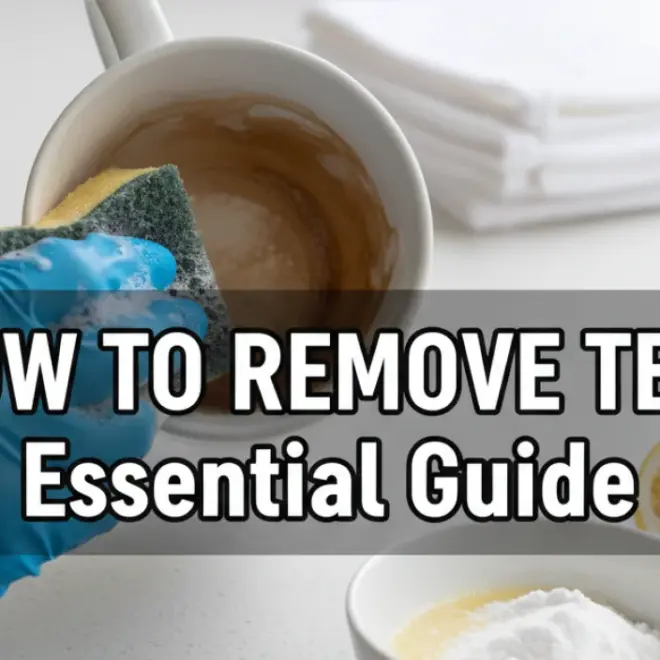Struggling with marker stains on your favorite light wash jeans? Don’t worry! This guide offers simple, proven methods to effortlessly lift ink marks, restoring your denim’s clean look. We’ll walk you through effective, accessible techniques you can use at home right now.
That moment when a stray marker mark lands on your cherished light wash jeans can be disheartening. Whether it was an accidental scribble from a child, a slip of the pen at your desk, or a mishap during a DIY project, ink on light fabric can feel like a permanent disaster. But before you resign your jeans to the back of the closet, know that a clean slate is often achievable. With the right approach and a little patience, you can effectively tackle these stubborn stains and bring your denim back to its former glory. This article is your friendly guide to making those unwanted marks disappear, proving that even tough stains can be effortless to remove.
Understanding Marker Stains on Denim

Marker ink is designed to be permanent or semi-permanent, meaning it contains dyes, pigments, and solvents that bind strongly to fabric fibers. Light wash jeans, with their lighter pigment, can make these ink marks appear even more prominent and daunting. The type of marker is a crucial factor in removal success: permanent markers (like Sharpies) are tougher than washable markers, and alcohol-based markers often respond better to alcohol-based removers than water-based ones.
The key to successful stain removal lies in acting quickly and choosing the right cleaning agent for the specific type of ink and fabric. Denim, while durable, can be sensitive to harsh chemicals, especially in lighter washes which may have undergone bleaching processes. Understanding these basics will help you select the most effective and safest method for your jeans.
Essential Tools and Supplies
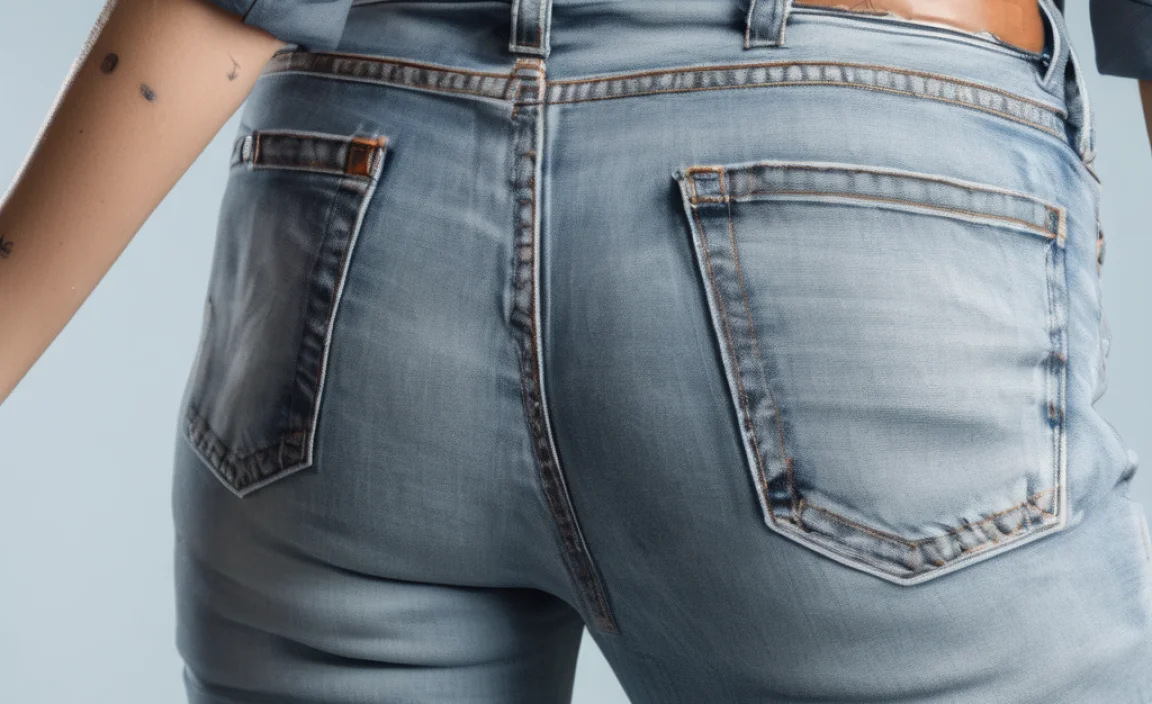
Before you begin tackling the stain, gather these common household items that will be your allies in the stain removal process. Having everything ready ensures a smoother, more efficient cleaning experience.
- Cotton balls or swabs: For precise application of cleaning agents.
- Clean white cloths or paper towels: To blot and absorb the stain and cleaning solution. Use white to avoid color transfer.
- Rubbing alcohol (Isopropyl alcohol, 70% or higher): A powerful solvent for many ink types.
- Hairspray (non-oily, alcohol-based): Can act as a solvent in a pinch.
- Nail polish remover (acetone-based): Another effective solvent, but test on an inconspicuous area first.
- Laundry detergent (liquid, preferably enzyme-based): For pre-treatment and final washing.
- Baking soda: A gentle abrasive and odor absorber.
- White vinegar: A mild acid that can help break down certain stains.
- Dish soap (mild, grease-cutting): Useful for lifting pigments, especially oil-based inks.
- An old towel or newspaper: To place underneath the stained area to prevent the stain from transferring to other surfaces.
- Cold water: Essential for rinsing and preventing stain setting.
Method 1: The Rubbing Alcohol Approach (Most Effective for Permanent Ink)
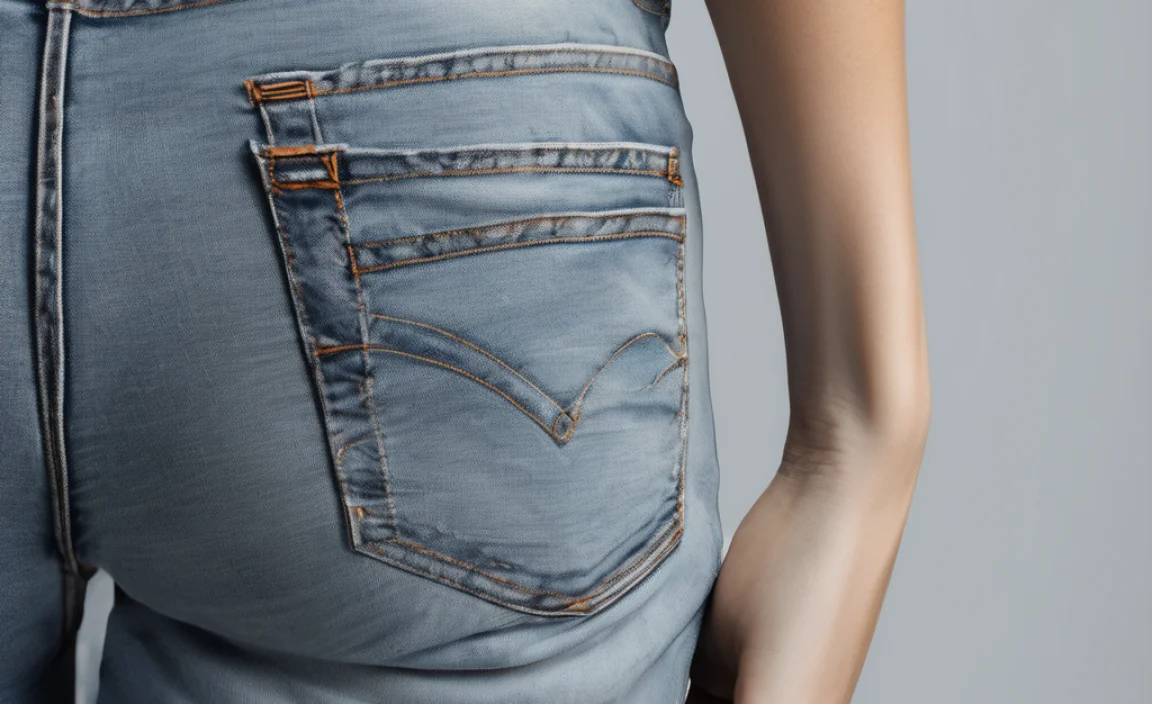
Rubbing alcohol is often the go-to solution for permanent marker stains because its primary ingredient, isopropyl alcohol, is a strong solvent that can break down the ink’s binding agents. This method is generally safe for most denim fabrics, but always test in an inconspicuous area first.
Step-by-Step Guide:
- Prepare the Area: Lay your jeans flat on an old towel or a stack of paper towels, with the stained side facing up. Place additional white cloths or paper towels directly underneath the stained section of the denim. This is crucial to absorb the ink and alcohol as it lifts, preventing it from spreading or transferring to another part of the garment.
- Test First: Before applying alcohol directly to the stain, dab a small amount onto an inside seam or hem. Wait a few minutes to ensure it doesn’t damage the fabric’s color or texture. Light wash jeans can be sensitive, so this step is important.
- Apply Alcohol: Soak a cotton ball or swab generously with rubbing alcohol. Gently dab the soaked cotton ball onto the ink stain, starting from the outside edge of the stain and working your way inward. Avoid rubbing vigorously, as this can spread the ink and push it deeper into the fibers. You should see the ink transferring from the jeans to the cotton ball.
- Blot and Replace: As the ink transfers, you’ll notice the cotton ball becoming discolored. Discard the stained cotton ball and use a fresh one with more rubbing alcohol. Continue dabbing and blotting, replacing the absorbent cloths underneath as they become saturated with ink. Patience is key here; you might need to repeat this process several times for stubborn stains.
- Rinse and Check: Once you can no longer see a significant amount of ink transferring, thoroughly rinse the treated area with cold water. Inspect the spot to see how much of the stain has been removed.
- Pre-treat with Detergent: If a faint stain remains, apply a small amount of liquid laundry detergent directly to the area. Gently rub it in with your fingers or a soft brush, then let it sit for about 10-15 minutes.
- Wash as Usual: Wash your jeans in cold water on a gentle cycle, using your regular laundry detergent. Do NOT machine dry them until you are certain the stain is completely gone, as heat can set any remaining ink residue permanently. Air dry them instead.
- Repeat if Necessary: If the stain persists after washing and air drying, you can repeat the rubbing alcohol treatment or try another method.
Method 2: Hairspray & Nail Polish Remover (Alternative Solvents)
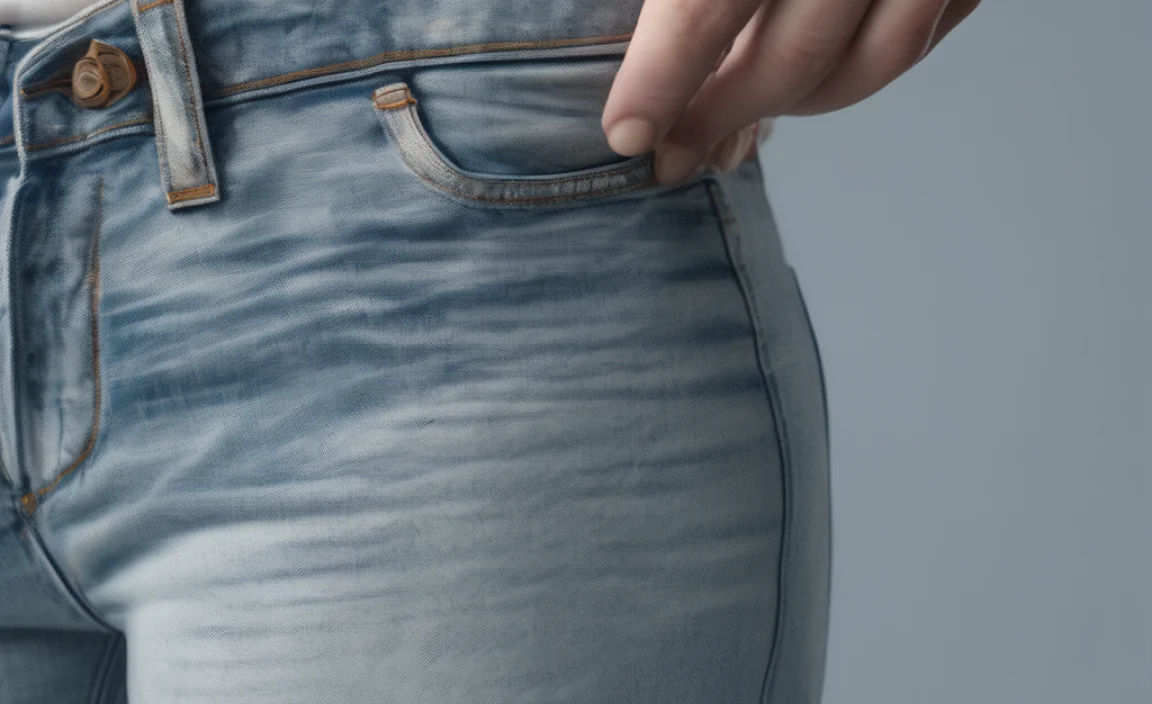
Hairspray and non-acetone nail polish remover can also work as solvents for marker ink, especially if rubbing alcohol isn’t readily available. The effectiveness of hairspray often comes from its alcohol content.
Using Hairspray:
- Spray Generously: Spray hairspray directly onto the marker stain, ensuring it’s well saturated.
- Let it Sit: Allow the hairspray to sit on the stain for a few minutes to work its magic.
- Blot Away: Use a clean white cloth to blot the stain. You should see the ink begin to lift. Continue blotting with clean sections of the cloth and reapply hairspray as needed.
- Rinse and Wash: Rinse the area with cold water and then launder the jeans as usual.
Using Nail Polish Remover (Acetone-Based):
- Test First: This is especially important for nail polish remover. Test on an inconspicuous area of the jeans to ensure it doesn’t lift the dye or damage the fabric.
- Apply Carefully: Soak a cotton ball or swab with acetone-based nail polish remover. Gently dab the stain, working from the outside in.
- Blot and Rinse: Blot the lifted ink with a clean cloth. Rinse the area immediately and thoroughly with cold water.
- Wash: Launder the jeans according to their care instructions.
Caution: Nail polish removers, especially those containing acetone, can be harsh. Use them sparingly and with caution. Always rinse thoroughly to remove all residue before washing.
Method 3: Dish Soap and Baking Soda Paste (For Less Stubborn Stains)
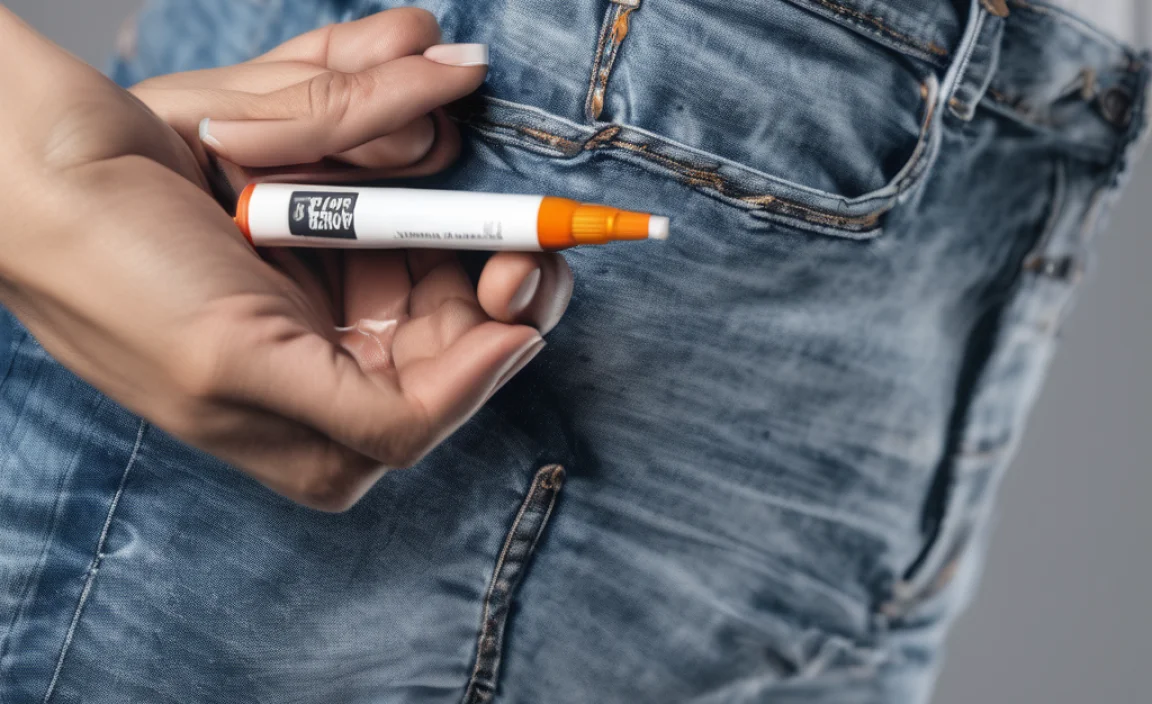
For less severe ink marks, or if you prefer a gentler approach, a paste made from dish soap and baking soda can be effective. Dish soap helps break down greasy components of ink, while baking soda acts as a mild abrasive.
Creating and Using the Paste:
- Mix the Paste: In a small bowl, combine a tablespoon of mild liquid dish soap with enough baking soda to form a thick paste. Stir until well blended.
- Apply to Stain: Spread a generous amount of the paste over the marker stain, ensuring it’s fully covered.
- Gently Work In: Use your fingers or a soft-bristled brush (like an old toothbrush) to gently work the paste into the stained fibers. Avoid harsh scrubbing.
- Let it Sit: Allow the paste to sit on the stain for at least 30 minutes, or even a few hours for tougher marks. You can cover it with plastic wrap to keep it from drying out.
- Rinse and Check: Gently scrape off the dried paste and rinse the area thoroughly with cold water.
- Pre-treat and Wash: If the stain is lessened but still visible, apply liquid laundry detergent to the spot and let it sit for 15 minutes before washing the jeans in cold water.
Method 4: Vinegar Soak (Mild Acidic Treatment)
White vinegar is a natural cleaning agent that can help break down certain types of stains, including some inks. It’s a gentler option that can be combined with other methods.
Vinegar Soak Steps:
- Prepare the Soak: In a basin or sink, mix one part white vinegar with two parts cold water. Ensure there’s enough solution to fully submerge the stained portion of your jeans.
- Soak the Jeans: Place the stained area of your jeans into the vinegar solution. Let it soak for at least 30 minutes to an hour.
- Blot and Rinse: After soaking, remove the jeans and gently blot the stain with a clean cloth. Rinse the area thoroughly with cold water.
- Follow with Detergent and Wash: Apply liquid laundry detergent to any remaining stain, let it sit for 15 minutes, and then wash the jeans in cold water.
The Science Behind Stain Removal
Stain removal is essentially a chemical process. Different types of stains and fabrics require different chemical approaches. For ink, the goal is to break the bond between the ink’s pigments and the fabric’s cellulose fibers. Solvents like rubbing alcohol and acetone work by dissolving the ink’s binder. Detergents contain surfactants that lower the surface tension of water, allowing it to penetrate the fabric and lift away the dissolved ink particles. Acids (like vinegar) and bases can alter the chemical structure of some dyes, making them easier to remove. Heat is generally the enemy of fresh stains, as it can cause them to molecularly bond more strongly with the fabric, hence the emphasis on cold water and avoiding the dryer.
Understanding the ingredients in your cleaning agents can also be helpful. For instance, checking the ingredient information for household chemicals can provide clues about their properties and how they interact with stains and fabrics. Always prioritize methods that are specifically recommended for the type of fabric you are treating, especially delicate materials like light wash denim.
Troubleshooting Stubborn Stains
Sometimes, the ink stain is particularly deep-rooted or has been on the jeans for a while. Here are some extra tips for those persistent marks:
- Combine Methods: Don’t be afraid to combine approaches. For example, you might start with rubbing alcohol, then follow up with the dish soap and baking soda paste if a ghost of the stain remains.
- Sunlight Bleaching (Use with Caution): For very faint residual stains on white or ultra-light denim, the natural bleaching power of the sun can sometimes help. After washing, if the spot is still slightly visible, try laying the damp jeans in direct sunlight for a few hours. Be cautious, as prolonged sun exposure can fade denim unevenly.
- Oxygen Bleach (for White or Undyed Denim): If your light wash jeans are predominantly white and contain no colored threads, an oxygen-based bleach (like OxiClean) can sometimes be used. Always follow product instructions carefully and test on an inconspicuous area. Avoid chlorine bleach, as it can yellow or damage denim fibers.
- Professional Cleaning: If all else fails and the jeans are valuable to you, consider taking them to a professional dry cleaner. They have access to more specialized solvents and techniques.
Preventing Future Marker Mishaps
While not all accidents can be avoided, a few simple habits can minimize the risk of marker stains on your favorite jeans:
- Wear an Apron or Old Clothes: When engaging in activities like crafting, painting, or DIY projects where markers might be present, always wear an apron or a dedicated pair of old clothes.
- Keep Markers Contained: Store markers in a designated place, like a desk organizer or a craft box, to prevent them from rolling or falling onto clothing.
- Educate Children: If children are involved, teach them about the importance of keeping markers away from clothing and furniture. Provide them with washable markers and appropriate surfaces for drawing, such as paper or coloring books.
- Check Pockets: Before washing any garments, always check pockets for stray pens or markers that might have slipped in.
Comparing Stain Removal Agents
Here’s a quick comparison of common agents used for marker stain removal on light wash jeans:
| Agent | Best For | Pros | Cons | Fabric Safety (Light Wash Denim) |
|---|---|---|---|---|
| Rubbing Alcohol | Permanent markers, alcohol-based inks | Highly effective solvent, widely available, relatively quick | Can be drying to skin, may have a strong odor | Generally safe; test first. |
| Hairspray | Some permanent markers (due to alcohol content) | Convenient if readily available, no rinse required before washing | Effectiveness varies greatly by formula, can leave a residue | Generally safe; test first. |
| Nail Polish Remover (Acetone) | Tough inks, permanent markers | Strong solvent | Can be harsh, may lift denim dye, strong fumes, test mandatory | Use with extreme caution; severe risk of dye removal. |
| Dish Soap & Baking Soda Paste | Less stubborn stains, gently lifting | Gentle, readily available, non-damaging | Less effective on very set-in or permanent ink | Very safe. |
| White Vinegar | Mild stains, can assist other methods | Natural, mild, readily available | Less powerful solvent alone, can smell while wet | Safe. |
When choosing a method, it’s always best to start with the gentlest option that you believe will be effective for the type of marker ink you’re dealing with. For permanent marker on light wash jeans, rubbing alcohol is typically the most reliable first choice after initial testing.
FAQs about Removing Marker from Light Wash Jeans
Can I use bleach on light wash jeans?
Generally, chlorine bleach is not recommended for colored denim, even light washes, as it can strip the dye unevenly, causing yellowing or weakening the fabric. Oxygen-based bleaches are a safer alternative for very light or white denim, but always test first and follow product instructions.
Will hairspray really remove marker stains?
Hairspray can work because many formulas contain alcohol, which acts as a solvent for ink. Its effectiveness depends on the specific marker ink and the hairspray’s alcohol content. It’s often a good alternative if rubbing alcohol isn’t available, but it’s not always as potent.
How quickly should I treat a marker stain?
The sooner you treat a marker stain, the better your chances of complete removal. Fresh ink is much easier to lift than ink that has been allowed to set into the fabric fibers for hours or days.
What if the stain is on a different color of jeans?
For darker wash jeans, the same methods can be used, but pay extra attention during testing. Harsh solvents like acetone or even rubbing alcohol can sometimes lift color from even dark denim. Always test on an inside seam or hem first.
Can I put my jeans in the dryer after stain removal?
Never machine dry jeans until you are absolutely certain the stain is gone. The heat from the dryer can permanently set any remaining ink residue into the fabric, making it much harder, if not impossible, to remove later.
Is alcohol safe for all types of jeans?
Rubbing alcohol is generally safe for most denim, but light washes can sometimes be more sensitive due to the bleaching process they undergo. Always perform a spot test on an inconspicuous area of the jeans, like an inside seam, before applying it to the stain.
Conclusion
Seeing a marker stain on your light wash jeans can spark immediate concern, but as we’ve explored, it’s often a manageable issue. By understanding the nature of ink stains and employing the right techniques – from the power of rubbing alcohol to the gentler approach of dish soap and baking soda – you can effectively restore your denim. Remember the golden rules: act fast, test any cleaning agent on a hidden spot first, and always avoid the dryer until the stain is completely gone. With these proven, effortless methods and a bit of patience, your light wash jeans can look as good as new, ready for you to wear with confidence.


